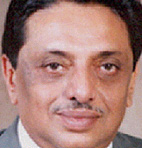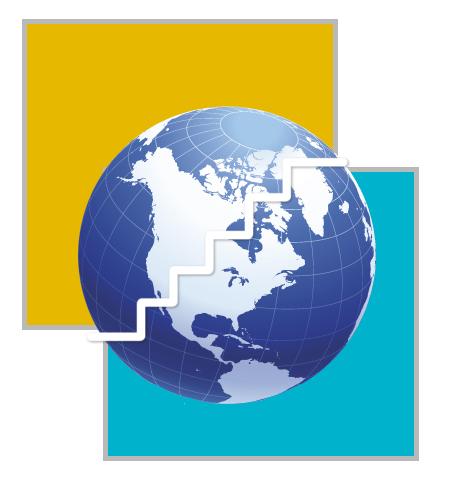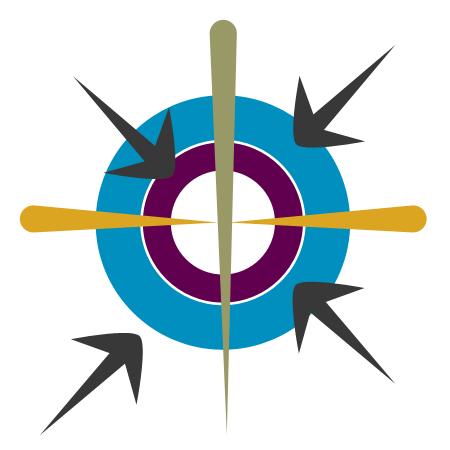MEDIA
Friendship between India and Pakistan reached fever pitch during their recent cricket matches. Asad Latif asks where trade is headed. ASK Senator Ilyas Ahmed Bilour about trade, and you will be discussing cricket with him in no time.
The president of the India-Pakistan Chamber of Commerce and Industry, who is a member of Pakistan's Upper House, is enthusiastic about economic ties between the two countries, which hit it off so beautifully in sports. He is on the line from Peshawar, home to Bilour Industries, a general trading company. Peshawar makes the point rather well. When India cricketers arrived in Pakistan recently for their first full series in more than 14 years, there was tremendous warmth towards visiting Indian cricket fans in 'this rather conservative town', according to a columnist of the online newspaper PakistanLink. 'Conservative' is a rather conservative word. Peshawar, in Pakistan's north-west, is said to have been a hotbed of support for the Taleban regime, once a heartbeat away in Afghanistan. Yet, when visitors came from Hindu-majority India, they were welcomed warmly.
Trade - undermined by three wars, two of them over Kashmir - is not in the same league. Its survival of the fittest, says Mr Teli Direct trade amounts to just US$200 million (S$340 million) annually; each country's exports to the other constitute a mere 1 per cent of its overall exports. These bare statistics are a pity because the two countries, with a combined population of more than 1.2 billion people, and a combined middle class of 350 million (per capita annual income of over US$1,000), provide scope for healthy mutual trade, says the Confederation of Indian Industry. What is ironical is that trade is occurring anyway. Informal trade, whether through third countries or smuggling, is estimated to be anywhere from US$1 billion to double that amount. Open borders would legalise illicit trade, generate revenues for both countries, lower costs for consumers and allow for greater exchange of basic goods which are much in demand, observers say. Stories abound of how much consumers would benefit. A commodities trader in Pakistan's commercial capital of Karachi wanted to import tomatoes last year. They were selling in India at a quarter of the Pakistan price, but controls prevented him from importing them. He lamented about the absence of direct trade to a news agency reporter. Sugar from Indian Punjab made its way to Iran before arriving in Pakistani Punjab, just a few kilometres away. Indian medicines get a chance to do some sight-seeing in Dubai on the way to Pakistan.
Tea is another case of opportunities foregone. According to a Reuters report, Pakistan imports 150 million kilograms of tea a year, making it the world's third-biggest importer. But less than four million kilograms, below 3 per cent, come from India, the world's biggest producer. Pakistan, on its part, is one of the largest cotton growers in the world, while India is a traditional importer. Political differences keep them from tapping into each other's natural advantages. 'India and Pakistan have the potential to enjoy trade of about US$1 billion if the hostile environment continues and US$13.25 billion, if peace prevails, on a cumulative basis for the next five years, resulting in an opportunity loss of US$12 billion,' Ms Semu Bhatt of the Strategic Foresight Group, a Mumbai-based think-tank, tells The Sunday Times. Pakistan shining THIS stranglehold of the past on economic life could change if rapprochement between the two countries takes off. SO CLOSE, AND YET SO FAR
Fortunately, observers on both sides of the border think that change is in the air. One reason is globalisation, particularly the role played in it by the World Trade Organisation (WTO). 'The survival of the fittest will be the order of the day. We might as well treat India as just another country and let businesses dictate their own terms,' says Mr Siraj Kassam Teli, president of the Karachi Chamber of Commerce and Industry. 'Pakistan will be the ultimate beneficiary.' Another reason is that Pakistan, like India, is shining now. A buoyant economy makes a breakthrough in relations more likely. The Indian economy is estimated to have grown by 8.1 per cent in the year to March 2004, helped by a rebound in the farm sector and growth in manufacturing and services. Yet another reason is regional. In January, the summit of the South Asian Association for Regional Cooperation in Islamabad agreed on a framework to move towards a South Asia Free Trade Association (Safta). Beginning in 2006, tariffs will be reduced gradually to 0-5 per cent in seven years for India, Pakistan and Sri Lanka, and in 10 years for the less-developed countries of Bangladesh, Nepal and Bhutan. Safta can transform relations between New Delhi and Islamabad. Mr Krishan Kalra, the additional secretary-general of the Federation of Indian Chambers of Commerce and Industry who looks after international affairs, says that while India and Pakistan compete to sell their goods in the global market, there are areas where they can complement each other and produce cost-effective, quality goods. Potential sectors for joint ventures include agricultural products, tyres, vehicle spare parts, minerals, chemicals, pharmaceuticals, leather, textile and telecommunications, he tells The Sunday Times from New Delhi. Free-traders looking at South Asia draw on the record of the North American Free Trade Agreement (Nafta), which has doubled total trade between Canada, Mexico and the United States in a decade from 1993. 'We would like to see this happen in other parts of the world as well. The progress made on Safta in Islamabad last January was encouraging and could lead to significant economic benefits for South Asia,' US Ambassador to India David C. Mulford said in Mumbai last month. Not all Pakistanis are convinced, though, by free trade agreements. Economist Javed Akbar Ansari sees Safta as an American project meant to establish India's regional hegemony as a sub-imperial power. Free trade in the region would concentrate technology-intensive and high productivity activities in western and southern India, and capital would desert Pakistan, he is quoted as saying in the country's Dawn newspaper. India and Pakistan have a combined population of more than 1.2 billion people, and a combined middle class of 350 million with per capita annual income of over US$1,000 (S$1,710). Direct trade amounts to US$200 million annually. Informal trade, whether through third countries or smuggling, is estimated to be anywhere from US$1 billion to double that. Pakistan imports 150 million kilograms of tea a year, making it the world's third-biggest importer. But less than four million kilograms, below 3 per cent, come from India, the world's biggest producer. India is estimated to have grown by 8.1 per cent in the year to March 2004. Pakistan grew by more than 5 per cent last year, inflation is low at around 3 per cent, foreign exchange reserves are more than 17 per cent of GDP, and the exchange rate is stable. Fortunately, observers on both sides of the border think that change is in the air. One reason is globalisation, particularly the role played in it by the World Trade Organisation (WTO). 'The survival of the fittest will be the order of the day. We might as well treat India as just another country and let businesses dictate their own terms,' says Mr Siraj Kassam Teli, president of the Karachi Chamber of Commerce and Industry. 'Pakistan will be the ultimate beneficiary.' Another reason is that Pakistan, like India, is shining now. A buoyant economy makes a breakthrough in relations more likely. The Indian economy is estimated to have grown by 8.1 per cent in the year to March 2004, helped by a rebound in the farm sector and growth in manufacturing and services. The road ahead BUT dire apprehensions about India's impact on the Pakistani economy are dismissed by those who look at China's regional role. 'We have survived cheap imports (and smuggling) from China. We would survive India. Don't fear,' another Pakistani economist told the newspaper. Indians point to their own experience with China to allay Pakistani fears. Mr Shiv Shankar Menon, India's High Commissioner to Islamabad, told a gathering in Pakistan last month that Indian businessmen were sceptical when New Delhi decided to establish trade links with Beijing, but both countries have benefited, and the balance of trade is in India's favour. Yet, apprehensions refuse to disappear. India extends Most Favoured Nation (MFN) status to Pakistan, which has not reciprocated. One reason, defenders of Islamabad's position say, is that Pakistan's average tariffs of about 10-11 per cent are far lower than India's. Equitable trade relations demand that tariff structures be aligned, they imply. Mr Kalra is not swayed by this argument. 'The levels of tariffs should not be considered for opening trade between the two countries. Pakistan has given MFN status to most countries irrespective of tariff levels,' he tells The Sunday Times. There are reservations on the Indian side, as well, over importing natural gas through an Iran-Pakistan-India pipeline. Ms Bhatt says that the import is the most cost-effective option available to New Delhi. India fears that Pakistan will use the pipeline as a strategic weapon in case of a conflict, she notes, but adds: 'India should consider the pipeline option if the current peace process continues for one more year or so.' Analysts dwell on the larger picture which trade helps to create. 'The greatest dividend of India-Pakistan trade would lie in growing business on both sides of the border, thereby giving people a stake in the other country,' argues a paper by the Centre for Strategic and International Studies in Washington. Ms Bhatt's report, which analyses the devastating human and financial cost of Pakistan's dropping a nuclear bomb on Mumbai and India's doing the same on Karachi, underscores the difference which communities of peace make in both countries. Businessmen are certainly such a community. They are ready to create stakes that go beyond cricket. Senator Bilour's India- Pakistan Chamber of Commerce and Industry embodies that stake in its very name. He is optimistic about the future, he says. That is something the sub-continent's famed cricketers would drink a toast to. |



 Areas of synergy exists, says Mr Kalra.
Areas of synergy exists, says Mr Kalra. In bustling Lahore, a young Pakistani actually took an Indian flag from a visitor and ran around waving it while shouting, 'Hindustan Zindabad (Long Live India)'. His friends joined in.
In bustling Lahore, a young Pakistani actually took an Indian flag from a visitor and ran around waving it while shouting, 'Hindustan Zindabad (Long Live India)'. His friends joined in. Peace could bring billions in trade, says Ms Bhatt.
Peace could bring billions in trade, says Ms Bhatt.

